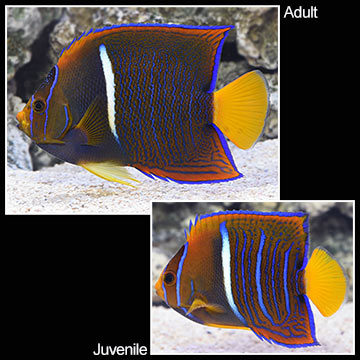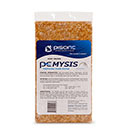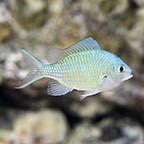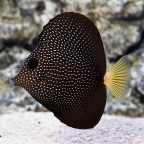
Additional locales and sizes may be available!
Additional locales and sizes may be available! Email me when availableQuick Stats
What do these Quick Stats mean? Click here for more information
What do these Quick Stats mean? Click here for more information
Overview
The Passer Angelfish can grow to over a foot in length so it requires at least a 250 gallon aquarium. It is a hardy fish, but can become aggressive, so it should be kept with other semi-aggressive tank mates. It grazes on live rock and will nip at stony and soft corals (sessile invertebrates) and clam mantles, so it is not a good candidate for a reef aquarium.
The diet of the Passer Angelfish should include vegetable matter such as Spirulina, marine algae, meaty items, and high-quality angelfish preparations which include sponges. Feed at least three times daily.
The Small Juvenile will contain the Juvenile colorations, the Small-Medium will be color shifting to a young adult, while the Medium will be a sub-adult, and the Large will be in Adult coloration.
Approximate Purchase Size: Juvenile: Small 1" to 1-3/4"; Medium 1-3/4" to 2-1/4"; Adult: Small: 1-3/4" to 2-1/4"; Small/Medium: 2-1/4" to 3-1/4"; Medium: 3-1/4" to 4"; Medium/Large 4" to 5"; Large: 5" to 6"; XLarge: 6" or larger.









